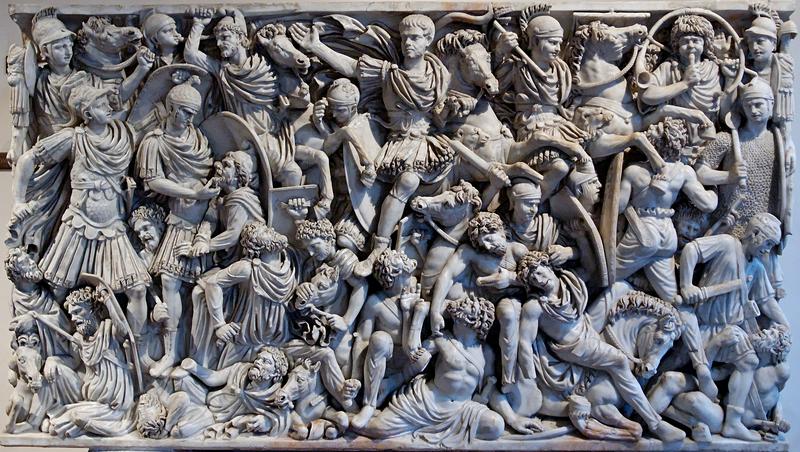History Of The Goth
By | August 5, 2021

When you hear the word "Goth," you may think of black clothing, macabre imagery, or melancholic music, but have you ever wondered where this subculture's name came from? The Goths were a real people or rather a name for various Germanic peoples who were famous for pushing back against the ever-expanding Roman Empire during the fourth and fifth centuries. In fact, it was in large part due to the Goths (alongside the Vandals, who famously sacked Rome) that Europe broke away from Roman rule and divided into smaller regions, with the Visigoths controlling much of what is now France and Spain and the Ostrogoths taking lands in the east, thus ushering in the medieval era.
Known to many as the Dark Ages, the medieval era was marked by an intense period of religious fervor, plagues, wars, and ongoing peasant revolts against the feudal system. European society shifted greatly after the fall of the Roman Empire, and architecture reflected that shift as the grand marble columns and stately arches that graced the important buildings of the classical age gave way to new, bold designs with vaulted ceilings, flying buttresses, stained glass windows, and ornately carved walls.

As reverently as the modern world may view buildings like the Notre-Dame or the Chartres Cathedral, though, the following Italian Renaissance wanted to move out of the Dark Ages and focus on things like invention, science, and dynamic, lively art. Many thinkers of the time took inspiration from the long-gone greats of antiquity, preferring the ruins of ancient Rome to the elaborate styles of the medieval age. In fact, it was Renaissance artist Giorgio Vassari who first described this form of architecture as "Gothic" in his book Lives Of The Artists due to its "barbarous German style." So yeah, to be called "Gothic" was an insult at the time.
Following the 1700s, A.K.A. the Age of Enlightenment, attitudes interestingly reversed when it came to art. The romantic era—embodied by authors like Lord Byron, Mary Shelley, and Edgar Allan Poe—abandoned the "reason above all" approach to instead embrace the world of wonder, terror, and romanticism. This creative revolt gave rise to the genre of Gothic literature, as many of the earliest stories of this macabre class were set in the Middle Ages. Of course, stories like Dracula, Dr. Jekyl And Mr. Hyde, and Frankenstein went on to influence popular culture for many years to come.

In the 1970s, a counterculture once again emerged from the British and American underground, and the dark and archaic tones of the music of The Doors and The Velvet Underground, among others, evolved into the Gothic music genre. Throughout the 1980s, both visual and tonal romantic influences became apparent in bands like The Cure and Southern Death Cult, and the impact the subculture had on fashion began expanding outside the music world and into the culture at large.
Even mainstream audiences were suddenly lapping up vampiric novels written by Anne Rice or the macabre yet whimsical films of Tim Burton, all while the subculture itself splintered off into more and more unique aesthetic identities, like the cyber goth, the gothabilly, and the Victorian goth, just to name a few. While the goths of today may not seem to have much in common with the Goths of the 300s, it is notable that every iteration of the goth has reflected either a physical, intellectual, or creative pushback against the larger mainstream culture, and every time it occurs, the art that follows is influential and impactful for many generations thereafter.

